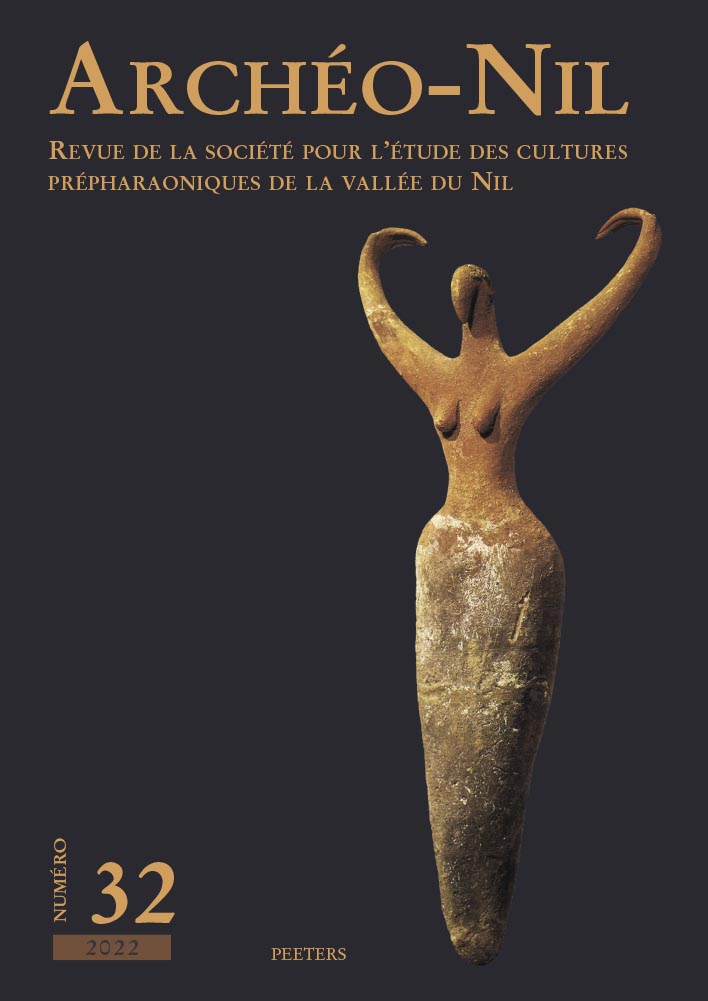 previous article in this issue previous article in this issue | next article in this issue  |

Preview first page |
Document Details : Title: Evidence for the Scalping of Captives on a Predynastic White Cross-Lined Jar Author(s): HENDRICKX, Stan , DROUX, Xavier , FÖRSTER, Frank , HARTMANN, Rita , HARTUNG, Ulrich Journal: Archéo-Nil Volume: 32 Date: 2022 Pages: 51-71 DOI: 10.2143/ANI.32.0.3291131 Abstract : A White Cross-lined jar (Naqada I, ca. 3800-3600 BCE) only known from an unpublished photograph allows to recognise a scalping scene. Although scalping is attested at Hierakonpolis by osteological evidence, no depiction of the act itself was previously known. Scalping is to be seen as another aspect of the interpersonal violence regularly attested in Predynastic and Early Dynastic iconography. The scalp is considered a trophy and allows comparison with the cut-off mane of a Barbary sheep as a hunting trophy, attested on other vessels. This is to be regarded as another example of the parallelism between interpersonal violence and hunting. The relevance and significance of scalping and other aspects of violence are discussed in the context of possible historical settings. Une jarre White-Cross-lined (Naqada I, vers 3800-3600 av. J.-C.) connue uniquement par une photographie inédite permet de reconnaître une scène de scalpage. Bien que le scalpage soit attesté à Hiérakonpolis par des preuves ostéologiques, aucune représentation de l’acte lui-même n’était connue auparavant. Le scalpage doit être considéré comme un autre aspect de la violence interpersonnelle régulièrement attestée dans l’iconographie pré et protodynastique. Le scalp est considéré comme un trophée et peut être comparé à la crinière coupée d’un mouton de Barbarie comme trophée de chasse, attesté sur d’autres vases. Il faut y voir un autre exemple du parallélisme entre la violence interpersonnelle et la chasse. La pertinence et la signification du scalpage et d’autres aspects de la violence sont discutées dans le contexte de situations historiques possibles. |
|


